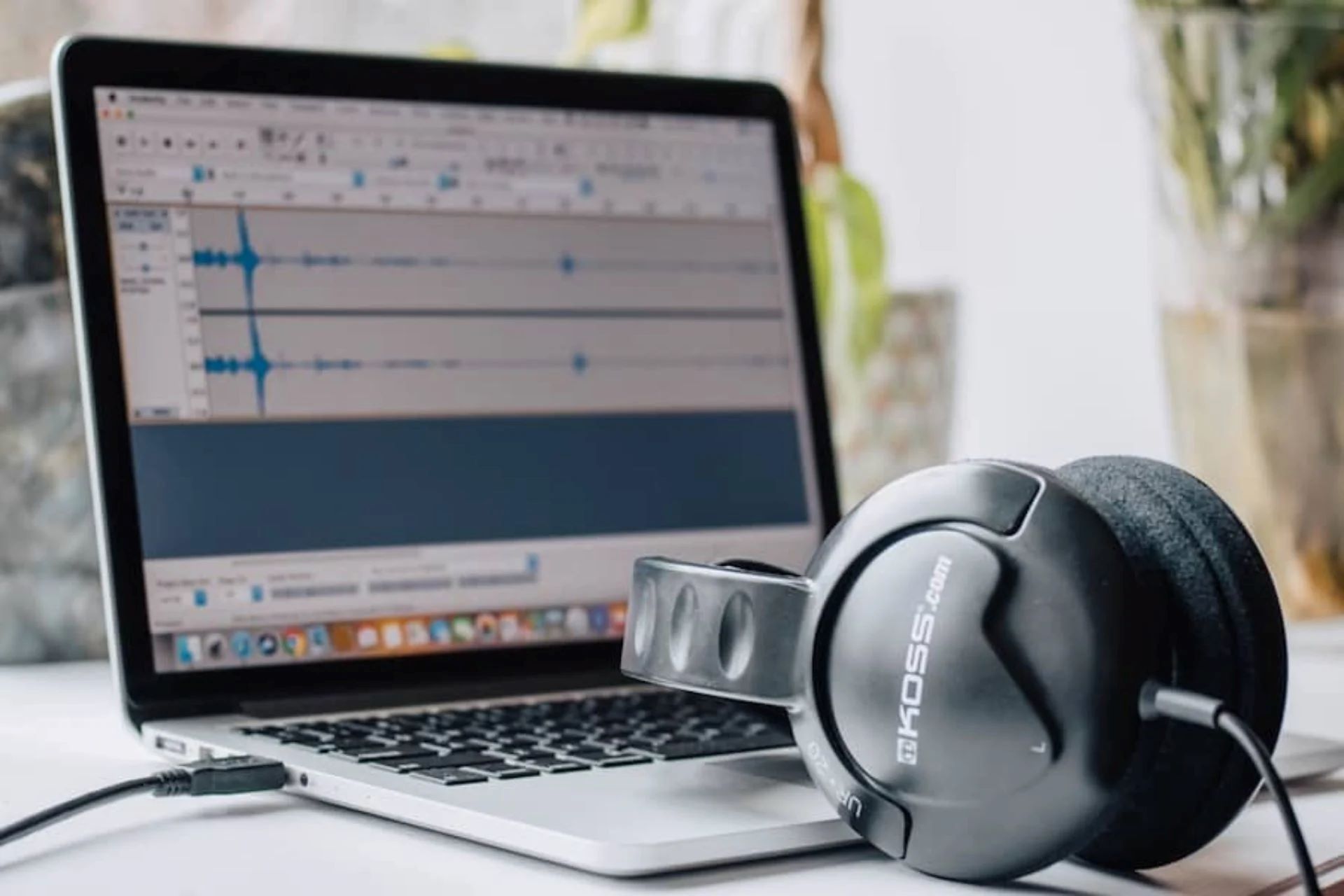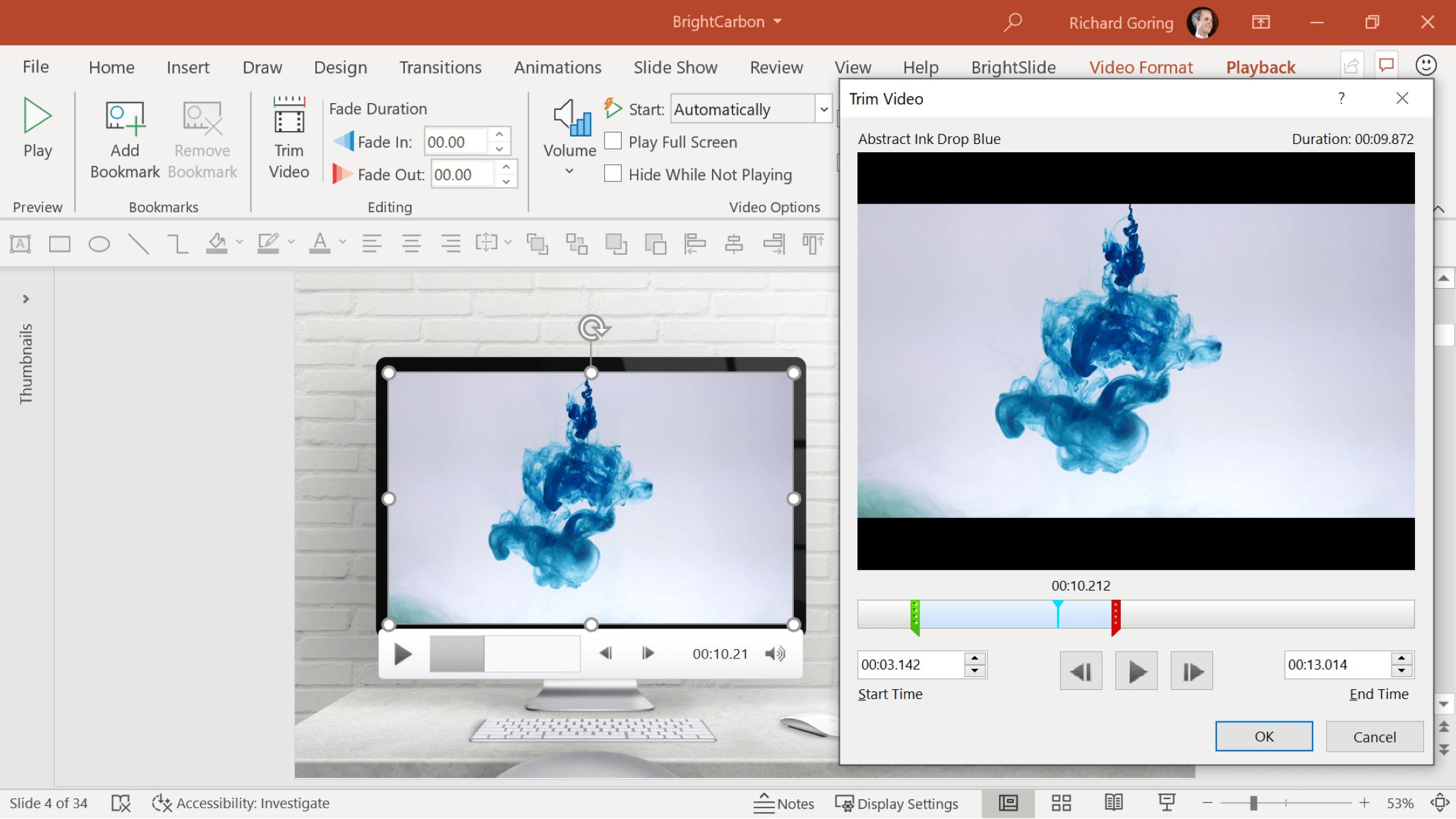Home>Production & Technology>Background Music>How Loud Should Background Music Be On Videos


Background Music
How Loud Should Background Music Be On Videos
Modified: January 22, 2024
Find out the ideal volume for background music on videos. Discover how loud your background music should be to enhance viewer experience and engagement.
(Many of the links in this article redirect to a specific reviewed product. Your purchase of these products through affiliate links helps to generate commission for AudioLover.com, at no extra cost. Learn more)
Table of Contents
Introduction
Background music plays a crucial role in enhancing the overall quality of videos. Whether it’s a short clip on social media or a full-length film, the right music can greatly impact the viewer’s experience. However, finding the perfect volume for background music can be a challenge. Too loud, and it may overpower the dialogue or distract the audience. Too soft, and it might go unnoticed, diminishing the emotional impact of the video.
In this article, we will explore the importance of background music in videos and uncover factors to consider when choosing the volume of background music. We will also delve into the effects of background music volume on viewer experience and provide recommended volume levels. Additionally, we will share some practical tips for adjusting the background music volume in videos, ensuring a harmonious blend that captivates the audience without overshadowing the content.
Whether you’re an aspiring filmmaker, content creator, or simply someone looking to enhance their videos, understanding the significance of background music volume is key. So, let’s embark on this exploration and discover the perfect balance for background music in videos.
Importance of Background Music in Videos
Background music in videos serves as a powerful tool to evoke emotions, enhance storytelling, and engage the audience. It has the ability to set the mood, create tension, convey messages, and leave a lasting impact on viewers. Here is a closer look at the key reasons why background music is essential in videos:
- Setting the Mood: The right choice of background music can instantly transport viewers to a specific time, place, or emotion. Whether it’s a cheerful tune for a lighthearted travel vlog or a haunting melody for a suspenseful thriller, the music can establish the desired atmosphere and draw viewers in.
- Enhancing the Narrative: Background music complements the visual storytelling by adding depth and dimension to the narrative. It can emphasize key moments, highlight emotions, and guide the viewer’s perception. A well-timed crescendo can amplify the impact of a dramatic scene, while a soft melody can create a sense of intimacy.
- Grabbing Attention: In a world with an abundance of video content, capturing and holding the viewer’s attention is vital. Well-chosen background music can instantly grab attention, hooking the audience from the opening seconds. A catchy melody or a unique sound can make a video stand out among the sea of content and encourage viewers to watch till the end.
- Symbolizing Brand Identity: Background music can contribute to building a brand identity and recognition. When used consistently across videos, it becomes associated with the brand and forms a connection with the audience. Think of iconic movie themes or jingles that instantly bring to mind a specific brand or product.
- Eliciting Emotional Response: Music has a profound impact on our emotions. By choosing the right background music, video creators can evoke specific emotions in viewers. Whether it’s joy, sadness, excitement, or nostalgia, the emotional response fostered by the music can deepen the connection between the viewer and the content.
In summary, background music in videos holds significant importance in capturing attention, enhancing storytelling, setting the mood, symbolizing brand identity, and evoking emotional responses. By understanding the crucial role it plays, creators can make informed decisions when selecting and balancing the volume of background music in their videos.
Factors to Consider when Choosing the Volume of Background Music
Choosing the appropriate volume for background music in videos is a delicate balancing act. It requires considering various factors to ensure that the music enhances the overall viewing experience without overpowering other elements of the video. Here are some key factors to keep in mind when selecting the volume of background music:
- Content Type: The volume of background music should be appropriate for the type of content being presented. For example, a documentary or tutorial video may require a lower volume to prioritize clarity of speech and information, while an action-packed montage or music video may benefit from a slightly higher volume to match the energy and intensity of the visuals.
- Genre and Mood: Consider the genre and mood of the video when determining the music volume. A serene nature video may call for softer and more subtle background music, while a high-energy sports montage may require a higher volume to match the excitement and intensity.
- Narrative Significance: Pay attention to the narrative significance of specific moments in the video. There may be key moments that require the background music to be more prominent to enhance the emotional impact. A climactic scene may call for a higher volume, whereas a quieter, introspective moment may require a softer and more understated musical accompaniment.
- Balancing Audio Elements: Consider how the background music interacts with other audio elements in the video, such as dialogue, sound effects, and ambient noise. The volume should be adjusted to ensure that the music does not overpower important dialogue or essential sounds. Achieving an appropriate mix and balance between the various audio elements is crucial to maintain a seamless and enjoyable viewing experience.
- Target Audience: Keep the target audience in mind when determining the volume of background music. Age, cultural background, and preferences can influence how the audience perceives and engages with the video. Consider what volume level would appeal to and resonate with the intended viewers.
- Medium and Viewing Environment: Consider the medium on which the video will be viewed and the likely viewing environment. The volume level that works well on headphones may need adjustment for speakers or large screens. Additionally, videos viewed in noisy environments may require the background music to be slightly louder to compensate for external distractions.
By carefully considering these factors, video creators can make informed decisions when selecting the volume of background music, ensuring it enhances the viewing experience and supports the overall purpose and message of the video.
Effects of Background Music Volume on Viewer Experience
The volume of background music in videos can significantly impact the viewer’s overall experience and perception of the content. Understanding the effects of background music volume can help creators make informed decisions when adjusting the volume levels. Here are some key effects to consider:
- Emotional Impact: The volume of background music directly influences the emotional response of viewers. Louder music tends to create a more intense and exciting atmosphere, while softer music can evoke feelings of tranquility or nostalgia. By adjusting the volume, creators can heighten or diminish certain emotions to enhance the overall impact of the video.
- Engagement and Attention: Background music that is too loud or overpowering can detract from the main content of the video, causing viewers to lose focus or become disengaged. On the other hand, music that is too soft or barely audible may go unnoticed, resulting in a lack of interest. Finding the right balance ensures that the music captures and maintains the viewer’s attention throughout the video.
- Comprehension of Dialogue: Background music volume must be carefully adjusted to allow for clear comprehension of dialogue. If the music is too loud, it can drown out the voices of the speakers, making it difficult for viewers to follow the narrative. Striking a balance between the volume of the music and the dialogue ensures that all elements of the video can be understood and appreciated.
- Perceived Quality: The volume of background music can influence the perceived quality of the video. If the music is too loud or poorly mixed with other audio elements, viewers may perceive the video as amateurish or unprofessional. Conversely, a properly adjusted volume can enhance the overall production value and leave a positive impression on the audience.
- Immersion and Atmosphere: Background music volume contributes to the immersive experience of viewers. It helps create a cohesive and immersive atmosphere that transports viewers into the world of the video. Whether it’s building tension, adding depth to a scene, or establishing a specific mood, the volume of the music plays a crucial role in immersing viewers in the story being told.
By understanding these effects, creators can make deliberate decisions regarding the volume of background music in their videos. Striking the right balance will enhance the emotional impact, maintain viewer engagement, facilitate clear communication, enhance perceived quality, and contribute to a more immersive viewing experience. Consideration of these effects is key to ensuring that the background music amplifies the desired message and enhances the overall viewer experience.
Recommended Volume Levels for Background Music in Videos
Choosing the appropriate volume for background music in videos is crucial to maintain a balance between the music and other audio elements. While there is no one-size-fits-all solution, here are some general guidelines for recommended volume levels:
- Dialogue Clarity: The volume of background music should be adjusted to ensure clear comprehension of dialogue. The music should never overpower the voices of the speakers. It should be soft enough to allow the dialogue to be easily heard and understood by viewers.
- Subtlety and Enhancement: Background music should serve as a complement to the content of the video rather than dominating it. It should enhance the mood, add depth, and create an immersive experience without overpowering other elements. The volume should be set at a level that allows viewers to enjoy and appreciate the music without it becoming distracting or overwhelming.
- Genre and Intended Emotion: Consider the genre and intended emotion of the video when adjusting the volume of background music. For example, if the video is a light-hearted comedy, the music may be slightly more prominent to enhance the comedic effect. Conversely, for a serious drama, the music may be more understated to create a sense of authenticity and realism.
- Consistency: Maintaining a consistent volume level throughout the video is essential for a smooth and enjoyable viewing experience. Sudden changes in volume can cause jarring transitions and distract the viewers. Ensure that the volume level of the music remains relatively constant unless there is a specific narrative or emotional reason to adjust it.
- Testing and Feedback: It is advisable to test the video with various viewers or colleagues to gather feedback on the background music volume. Take into account their input and adjust accordingly to find the right balance that appeals to the intended audience and aligns with the overall vision of the video.
Remember, these recommendations are not rigid rules but rather guidelines to assist in finding the ideal volume levels for background music in videos. Every video is unique, and the final decision should be based on the specific content, narrative, and intended impact. Striking the appropriate volume balance will result in a harmonious blend of music and other audio elements that enhances viewer engagement and the overall quality of the video.
Tips for Adjusting Background Music Volume in Videos
Adjusting the volume of background music in videos requires careful consideration to strike the right balance with other audio elements. Here are some practical tips to help you achieve optimal results:
- Use Reference Tracks: Compare the volume of your background music with professionally produced videos in a similar genre. Use these videos as a reference to gauge the appropriate volume level for your own music.
- Master the Dynamic Range: Pay attention to the dynamic range of your background music. Ensure that it has enough variation in volume to create impact and emotion, without being too loud or too soft throughout the entire video.
- Test with Different Devices and Environments: Listen to your video on different devices and in various environments to ensure that the background music volume works well across different platforms and playback systems. This will help you identify any issues and make necessary adjustments.
- Consider Compression and Limiting: Utilize compression and limiting techniques during the audio mastering process to help control the overall volume and prevent any sudden spikes or drops in the background music that may distract or overpower the other audio elements.
- Pay Attention to Pacing: Adjust the volume of the background music to match the pacing and intensity of the video. Increase the volume during more energetic moments or suspenseful sequences, and lower it during quieter or more introspective scenes.
- Solicit Feedback: Share your video with a trusted group of colleagues or friends and ask for their feedback on the background music volume. Their fresh perspective can provide valuable insights and help you refine the volume to better resonate with your target audience.
- Perform A/B Testing: Create multiple versions of your video with different background music volume levels. Conduct A/B testing with a small segment of your target audience to gather feedback and determine which version resonates best with viewers.
- Keep an Eye on Levels: Continuously monitor the volume levels of all audio elements in your video editing software or digital audio workstation. Make adjustments as necessary to maintain a balanced mix and prevent any element, including the background music, from overpowering the others.
Remember, adjusting the background music volume is a creative process that requires careful attention to detail and consideration of the overall viewing experience. Follow these tips, trust your instincts, and experiment to find the perfect volume balance that enhances your video and captivates your audience.
Conclusion
Background music plays a crucial role in videos, setting the mood, enhancing storytelling, and engaging the viewers. Choosing the right volume for background music is essential to strike a balance between its presence and other audio elements. By considering factors such as content type, genre, narrative significance, and the target audience, you can make informed decisions when adjusting the volume levels.
The volume of background music directly impacts the viewer’s emotional response, attention, comprehension of dialogue, perceived quality, and overall immersion in the video. It is important to find the sweet spot where the music enhances the viewing experience without overpowering or distracting from the main content.
When adjusting the background music volume, it is recommended to prioritize dialogue clarity, subtlety, and the intended emotional impact. Consistency throughout the video is also important to maintain a seamless flow. Testing the video across different devices and environments and seeking feedback from others can provide valuable insights and help achieve optimal results.
Remember, the volume of background music is a creative decision that should align with the intended message and audience preferences. By following these tips and guidelines, you can effectively adjust the volume of background music to create captivating videos that leave a lasting impression on viewers.











